I can’t even guess how many times I’ve fooled a salmon into striking a Rhys Davis teaser lure. For nearly 70 years, this line of hollow plastic bait-retaining devices has been tricking salmon and other game fish into thinking they had an easy meal. Today, few BC anglers leave the dock without a supply of plastic teasers in their tackle box, along with a tray or two of frozen anchovies or herring. But how many know the story behind the lure?
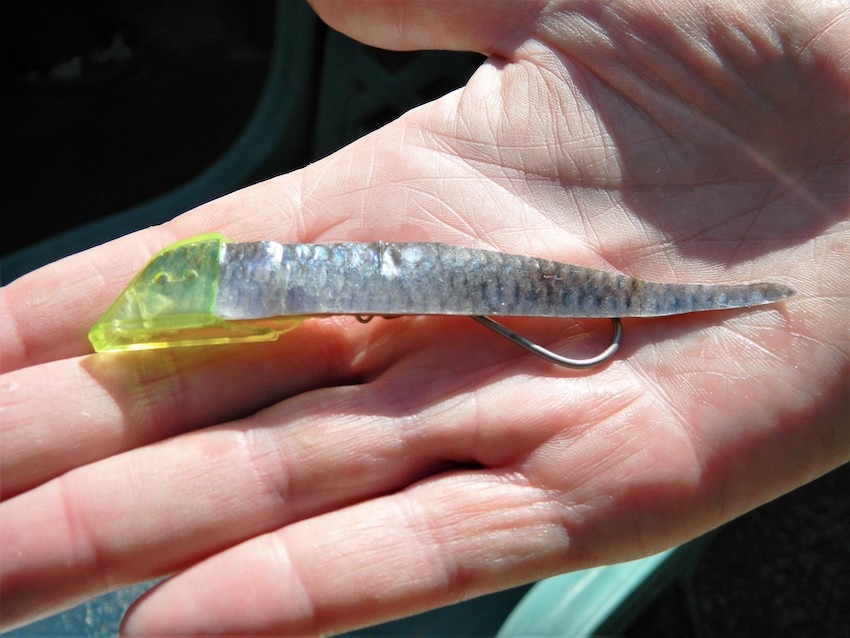
From Furs to Fishing
Rhys was born in 1906 and grew up on the family farm near the present-day Swartz Bay ferry terminal. He loved fishing and hunting, but not just for the sport. In those days, both were important activities that put food on the family table.
He was also a skilled craftsman. In his late 20s and early 30s, he spent part of each year in Seattle as a furrier, where he custom designed and made women’s fur coats and stoles for Fredrick and Nelson’s, a prominent Seattle department store. He met his future wife and business partner, Loma, during this this period. He also regularly fished for salmon in Puget Sound, and the idea to make a fishing lure took hold.
For the remainder of each year, he returned to the farm at Swartz Bay and earned a modest living logging, commercial fishing for salmon and cod, and operating a trap line for mink. He also used this time to perfect his first production lure called the “Strip Teaser.”
His vision of a plastic device to hold bait began through a process of trial and error. He was inspired to create a natural bait lure that was better than the popular cut spinner/dodger combination he’d used in Puget Sound. He felt spinners were difficult to cut and rig, while they lacked a consistent action, partly because the leading edge of the spinner softened too quickly for his liking.
A Family Affair
Rhys spent many hours on the original Swartz Bay ferry dock in search of the “perfect roll.” He was also very forgetful. His son, Tom, only 4 or 5 years old at the time, often accompanied him on the short walk from the house to the dock. One day Rhys arrived home and walked into a firestorm from Loma. “Where’s Tommy?” Rhys, a 400-meter runner in high school, immediately beat a record retreat to the dock and, to his relief, found his son playing happily, unfazed by the drama that had just unfolded.
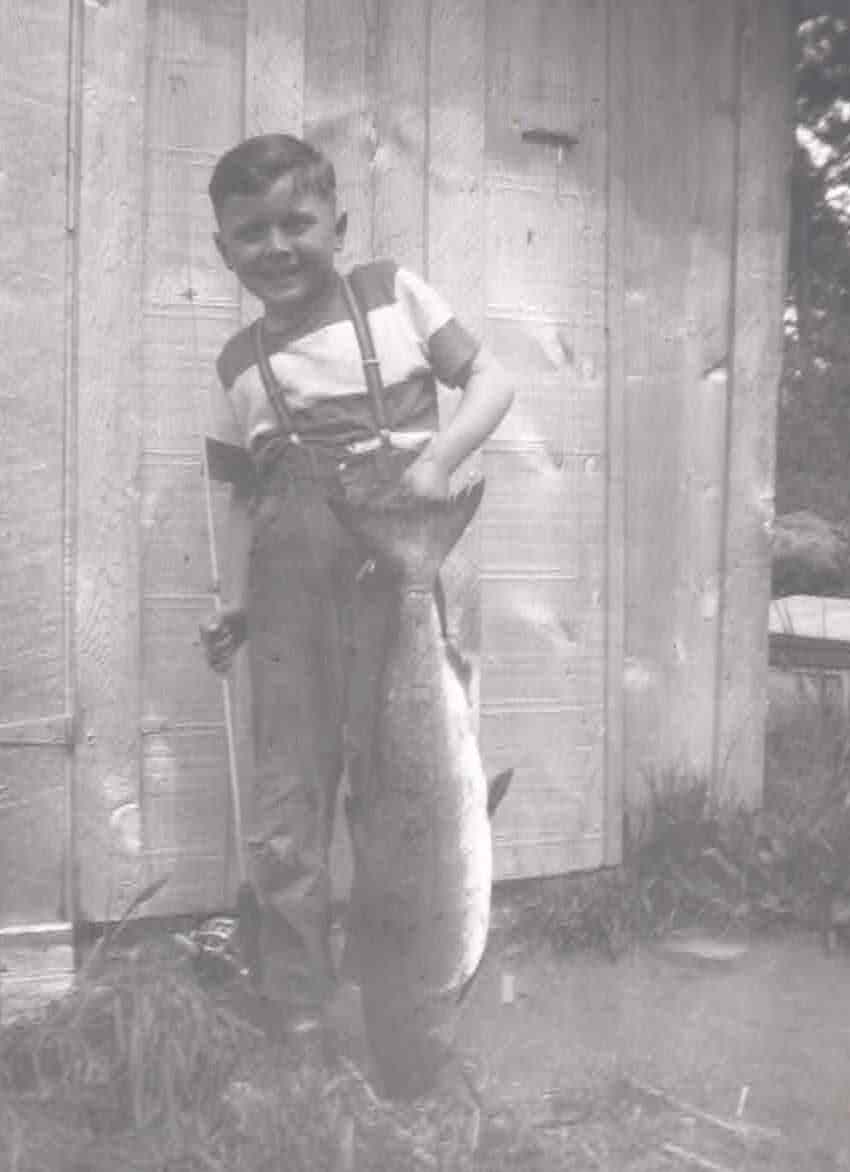
For the Strip Teaser to be a success, he had to supply herring strip precisely fitted to the cavity of the new bait holder. Strip cutting was a labor- intensive job, and early on it was a family operation. Rhys cut all the strip and Loma tied all the lures. Daily production just barely filled the freezer on the top of the kitchen fridge. Tom would put the boxed frozen strips in plastic bags and seal them when he got home from elementary school. For this job he got 10 cents a package, about $2 a day, not bad for a kid in the late 1950s. As business increased, he had as many as 3 cutters, plus a helper, working in the newly constructed “herring shed” located at the farm. Meanwhile, employees working in their own homes assembled the lures.
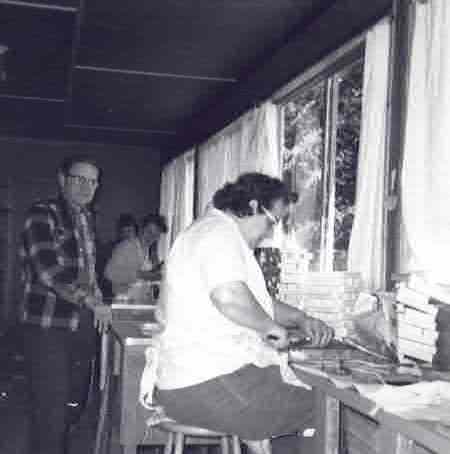
Beyond The Island
By 1980, increasing demand required greater production capacity, so Rhys entered into a long-term contract with Walcan Seafood on Quadra Island. They caught, ponded, processed, cut, and packaged herring strips, along with whole herring and later anchovies. By this time, anchovies were fast becoming the most popular trolled natural bait for BC anglers, eventually replacing strip as the number one Rhys Davis trolling bait product. Processing real baits for sportfishing and maintaining high quality standards is expensive and complicated. Every step, from catching the herring to storage and distribution, required constant monitoring.
Teaser lure production followed a similar marketing path. Early on, Rhys realized he needed help with the lure injection molding process. He contacted Washington lure maker Les Davis (no relation) and entered into a joint manufacturing and marketing arrangement so the Strip Teaser could be sold in both countries. The name Strip Teaser remained in Canada, but it was sold as Strip Rig in the USA.
Tom joined the company in the early 70s and repatriated the injection molds to Canada. From that time forward, manufacturing was done in Victoria by Scott Plastics until Tom sold the business to Gibbs Delta Tackle in 2014. Gibbs has very wisely continued using the Rhys Davis name. The Anchovy Special was the last lure that Rhys designed. It came to market in 1985, and was preceded by the Large Teaser, Super Teaser, Tiny Teaser, Minnow Teaser, Super Minnow, and Super Herring Teasers in a limited range of colours. Rhys remained with the company in a design capacity until his death in 2002 at 96 years old.
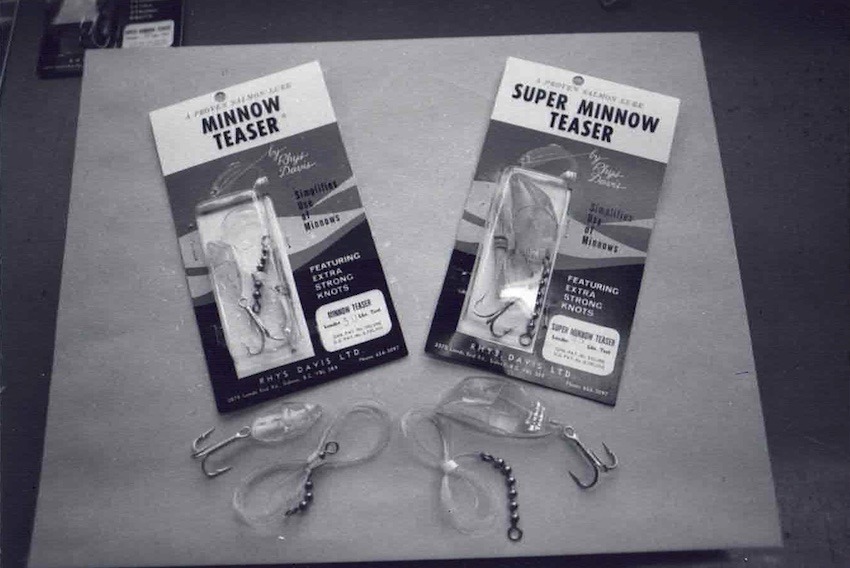
The Rhys Davis Legacy
Tom bought the company from his father in the early 90s and introduced the Bullet Roll Special and the revised Super Herring Special, plus an expansive range of colours based on new glow and UV pigment technologies. He was also responsible for introducing Rhys Davis products to a much broader world market.
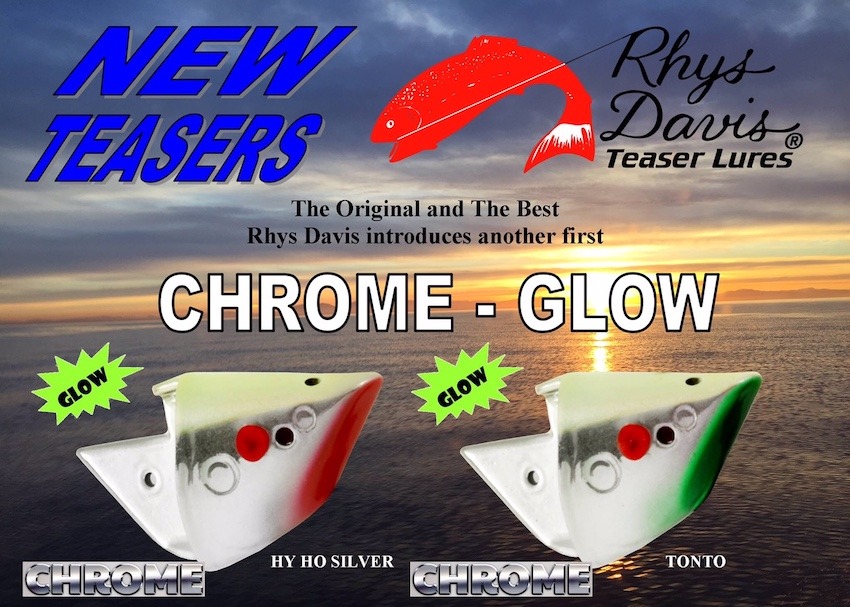
His first venture away from the Pacific coast led him to Lee Klapprodt. Lee was a Chinook fisherman in, believe it or not, Bismarck, North Dakota, where Chinook salmon had been introduced to Lake Sakakawea on the Missouri River. With Lee’s help, Tom introduced west coast bait trolling to freshwater salmon anglers. Ironically, Lee became the company’s distributor in North and South Dakota, where baits and teasers are still used.
The next marketing move was to the Great Lakes, where Chinook and coho were introduced decades earlier. In fact, for a time, the world record coho came from Lake Ontario and it was caught on a Rhys Davis Large Teaser. Tom took numerous trips to the Great Lakes to demonstrate, by example, the fish catching benefits of this system to anglers and charter captains.
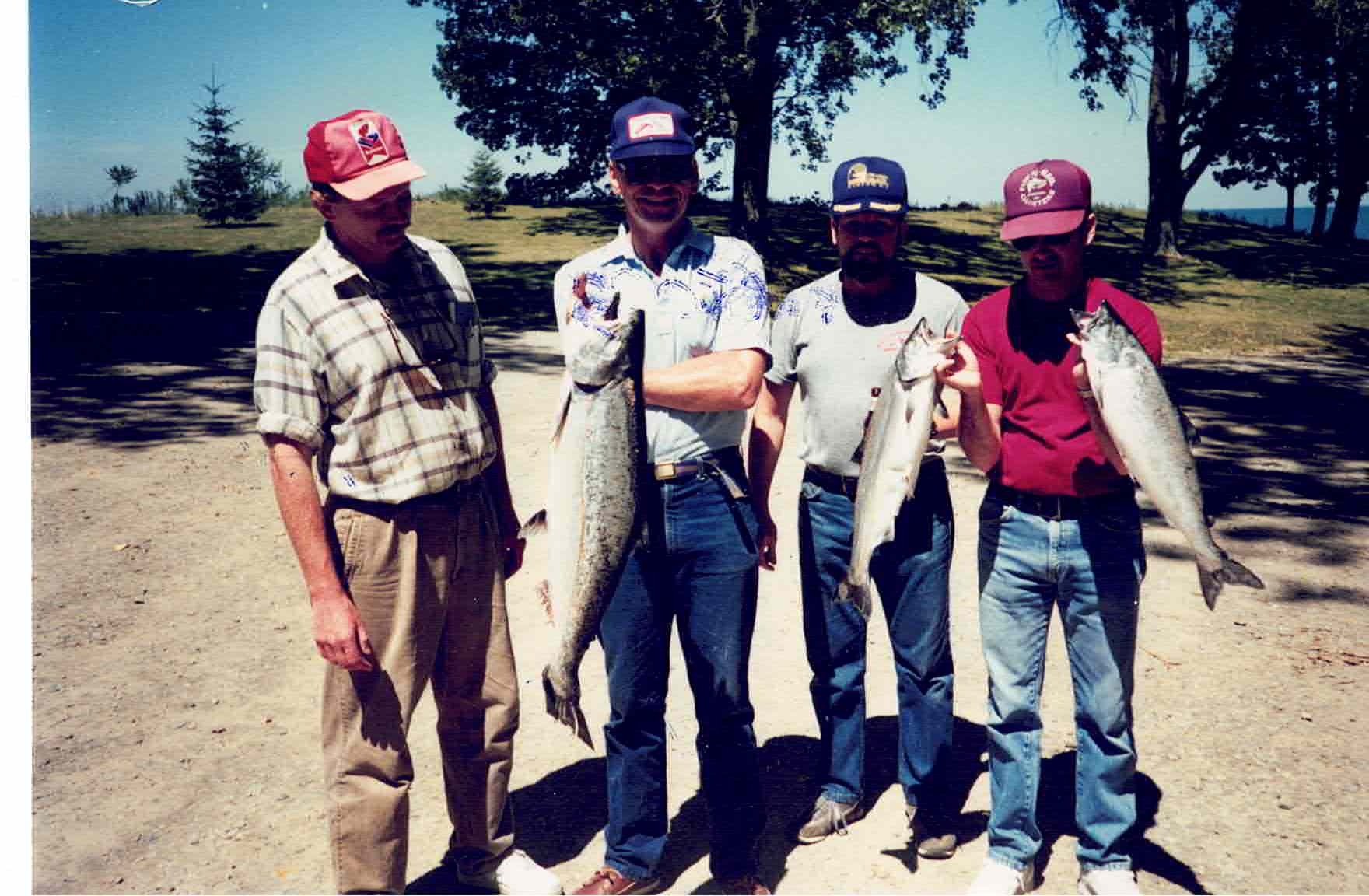
The teasers are also used to catch transplanted Chinook near Dunedin on New Zealand’s South Island. At the same time, a much larger market developed for trout and landlocked Atlantic salmon in Sweden and Finland, as well as for lake trout in the Northwest Territories.
Chile is another area with transplanted Columbia River Chinook, and a fantastic Chinook lake and river fishery has developed. Adults range from 26 to 40 lbs, with the odd fish reaching 70 lbs. Maybe this is another place to try a teaser lure?
My favourite bait holder has been the Anchovy Special, which I have been using “wired” for over 30 years. In the early 90s, I did some guiding for North Pacific Springs in upper Knight Inlet. Most of the guides used “wired” Anchovy Specials. The advantage of the wire is that it creates the perfect roll, and it holds that action much longer than a toothpick in the blister. Over the years, I’ve used several colours and they all caught fish. But glow green, chrome gold, and green and gold have produced the most fish.
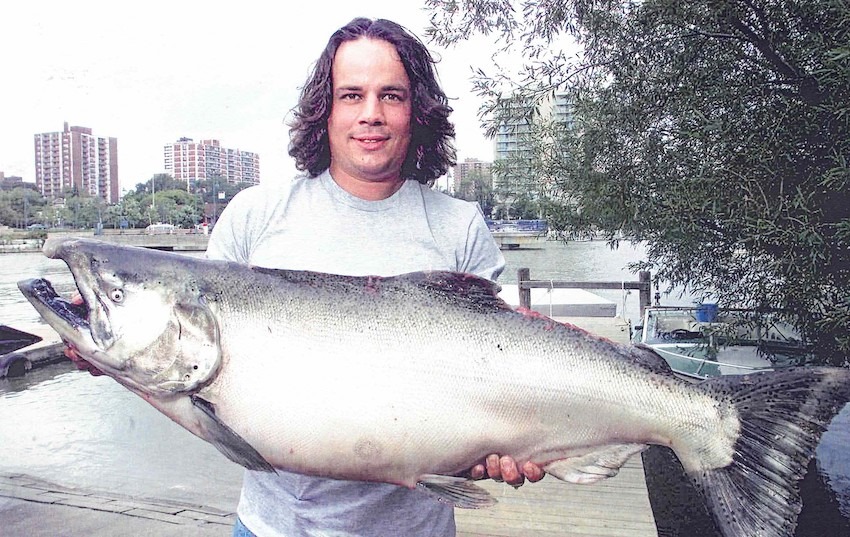
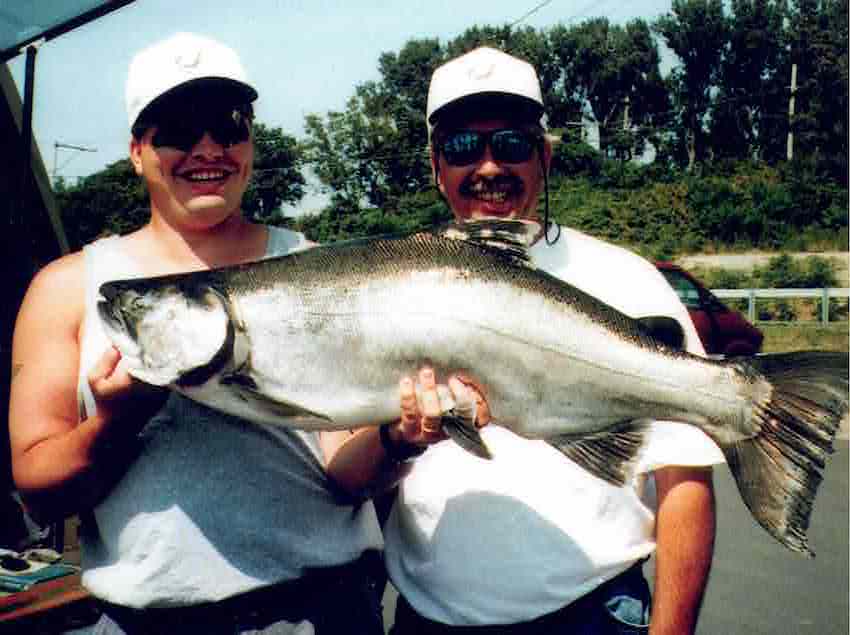
On one trip, I took out an elderly gentleman from Florida whose lifelong dream had been to catch a large Chinook. He had brought a gallon jar of frozen mullet, which he said was a favourite bait in Florida. The next morning, I put a thawed mullet in a gold Anchovy Special, then ran it down to 80′. It rolled pretty nice, other than being brown!! I turned around to set up the other rod when I heard the snap of the line coming off the clip. The old guy knew how to fish, so I just shouted “Don’t touch the drag!” A half-hour later I slipped the net under a beautiful 47-lb Chinook, to this day my biggest. Ironically, I never caught another salmon with those remaining mullet. A couple of months later he sent me a picture of a fiberglass replica of his big Chinook. His dream was fulfilled.
I would be remiss if I didn’t mention Tom Davis’s work on behalf of the sportfishing community in BC. He has been an advocate on our behalf for many years on numerous advisory boards and commissions. As a contributing writer for several BC magazines, he makes sure the DFO recognizes the importance of recreational fishing to the overall economy.
I turn 82 next spring, and if all goes well I will soon be off Malcolm Island before daylight. You can rest assured that the first rig in the water will be a Rhys Davis Anchovy Special, with an anchovy securely fastened by a red plastic pin. Then I will brace myself for the next strike.







I fish a Rhys Davis anchovy Chrome Glow on my third rod when I’m fishing Hakai Pass. I use 4 oz., no flasher, and I run it about 10 to 15 feet behind the boat, right in the wake. Many days that rig out fishes the cut plugs and the lures. I prefer larger anchovies but as in all things fishing, it varies. One day my son and I were nailing cohos on the Rhys Davis teasers, at the mouth of the Koeye River, while the other boats weren’t seeing any action. After we limited out, I went over to a boat with a dad and son and gave them the rest of my anchovies and both my anchovy rigs. I told them how to fish them and then we left. I always hoped they got as much fun from them as we did.
It’s a shame everything is made offshore now. Quality really took a hard drive as well.
The Gibbs flashers I bought recently are Canadian made. Did they move some production offshore recently?